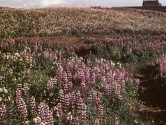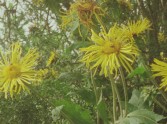





Being In a Place.
Rediscovering Margaret Tait
Margaret Tait’s is an unlikely story, but then poets’ always are. Born in Kirkwall in 1918, she left at eight to go to school in Edinburgh. She studied to be a doctor in the late 1930s and in 1943 joined the Royal Army Medical Corps, serving in India, Sri Lanka and Malaysia. Of her eventual turn from medicine to art, Tait said, “I think I gradually came over to feeling that it was necessary to do something more than simply bringing people back to bodily health.” Like many northern poets before her, she sought her inspiration in Italy. Tait would later recall how she went to Rome to research a script based on the life of St. Francis. Scooped by Rossellini’s The Flowers of St. Francis (1950), she enrolled in a filmmaking course at the Centro Sperimentale di Photografia, where she studied for two years.
She may not have made her life of St. Francis, but neither did she stray far from the Franciscan ideal. Robert Bresson once remarked that there is a prejudice against simplicity in cinema, and that surely goes double for a woman in midcentury Scotland. Without any available infrastructure to produce the kind of poetic films she had in mind, Tait launched Ancona Films out of her Edinburgh studio in 1953. Within ten years, she had a clutch of short films and five volumes of poems and stories to her credit.
Tait’s films are resolutely small-scale, human sized. The main action of Land Makar (1981) consists of the rebuilding of a haystack after a gale, while a family of swans goes about their business at loch’s edge. The ordinary sights of a dead bird (1974’s Aerial), an old woman unwrapping a sweet (1952’s A Portrait of Ga), or a gate’s being latched (1955’s The Leaden Echo and the Golden Echo, a heavenly illustration of the Gerard Manley Hopkins poem) come touched by epiphany. “I used to lie in wait to see the clover open / Or close,” one of her poems reads, “But never saw it. / I was too impatient, / Or the movement is too subtle, / Imperceptible / And more than momentary.” She found an ideal instrument for such patient probing in a handheld Bolex camera (“A tool that is fully used,” Tait writes elsewhere, “gets a bloom on it”), with shots quickened by cuts that work as line breaks. Her progressively more adventurous, contrapuntal use of sound further dynamized her montage, such that the images of her films glint while the sounds burrow.
The modesty of Tait’s work should not obscure the fact that she experimented with a strikingly contemporary variety of forms: from landscape film to hand-painted abstraction, portraiture to fable, pure color to documentary voice. She did not hold to any particular way of working, at times producing films for public television and local government, and later in life working at feature length (1992’s Blue Black Permanent). One senses that her distaste for labels—she didn’t particularly like “avant-garde” or “diary film” and had her doubts about documentary value altogether—stemmed from a broader resistance, abundantly evident in her art, to anything getting in the way of direct contact.
What holds all this work together is an abiding preoccupation with place—truly a sense in Tait’s films. Her Orkney is a place of work, family, the street, and history, as surely as it is one of animals, plants, wind, and sunlight. It is a place where land meets sea and days eternity. In Ronald Blythe’s Akenfield: Portrait of an English Village, a very Tait-like book fashioned from oral histories, there is a short chapter given over to a poet who has left behind a jobbing life for rustic simplicity. “I am now at home here,” he says of the village, “Words have meaning for me here. I am lucky, I came here to get better but I have in fact been reborn. I have escaped into reality.” Tait’s films bear the imprint of this same quiet revelation, forever pointing the way home. – Max Goldberg





